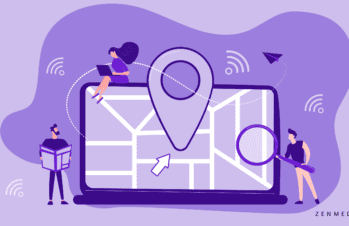People relate to other people.
People trust other people (at least more than they’ll trust just your marketing alone).
The fact is: people are much more interested in relatable human content than messaging coming straight from a brand. In fact, 93% of consumers turn to customer reviews and recommendations before making their purchase decisions. Raw, honest feelings from their peers influence consumers to either lean in toward a brand or leave them high and dry—people want to see something real.
That’s why user-generated content (UGC) is such an effective tool for businesses to expand their reach and directly engage with their audience, while building their reputation and credibility along the way. The more authentic a brand comes across, the higher the chance for prospects to actually convert into customers. So the remaining question is: why hasn’t your brand harnessed the power of UGC?
What is User-Generated Content?
As a marketer, UGC is probably a term you’ve heard being tossed around. While you may know it’s a good thing to have, finding the best approach to leverage it for your brand can be tricky.
Defined, UGC is any content—text, videos, images, reviews—created about a brand by a user or customer of the brand. Organic content from real people leaves a lasting impression far longer than a couple of stock or branded images and cartoon graphics—no matter how well they’re pieced together.
People consume user-generated content daily. Every time they scroll through a social feed, there is almost a guarantee they’ll see the following or something similar:
- Reviews under a product or company page
- How-to videos with a user demonstrating a product or service
- A friend’s social post raving about their latest purchase
UGC can inspire more engagement than traditional forms of marketing because of its perceived unbiased nature. People consider this content, and ultimately your brand, to be more trustworthy and authentic if you have UGC as social proof. Whether a well-renowned company or a small startup, you can benefit greatly from incorporating UGC into your B2B marketing strategies. After all, winning trust is the first major step toward making a sale.
Related Reading: Here’s How to Build Trust In Your Brand in 2022
So now that you have a better idea of what UGC is and what it can do for your brand, it’s time to learn how to use it to your advantage.
How to turn user-generated content into a winning strategy
The influence of UGC continues to grow across all social channels, and having it shows undeniable proof of your brand’s validity. However, as with any marketing initiative, UGC is only effective for your brand when shared and seen. Here’s how to make that happen.
Related Reading: How to Take Your User-Generated Content from Good to Great
Involve your employees
Sharing B2B content about your company’s culture and the people that make it up is a great way to differentiate yourself from competitors. Prospects don’t know who you are yet, so putting your team front and center creates a positive brand sentiment—instead of the guise of a faceless company.
Ask one employee weekly to share a picture of their workspace to their social media, tagging your company and maybe even using a hashtag specific to the digital campaign. (Make sure to give your employees notice on this—they may want to clean up their space before photographing it! No judgment here.) Better yet, ask them to share pictures with co-workers—this one is fun in a remote work environment because you can see everyone’s adorable pets!
While UGC must be generated by a user other than your company’s official pages, you can also take this concept and apply it to your social media content creation internally. Content like an “inside look” of a day in the life of your executive team or memorable moments from their personal lives provides a human element to your company. It also encourages employees to share their positive work experiences and the small victories that occurred outside of work. We even do this here at Zen Media! Look at any of our social media, and you’ll see our “Co-Worker of the Week” series featuring our employees’ furry friends, along with employee features, personalized welcome posts for new hires, and more! While this doesn’t count as UGC, it is a creative way to reuse UGC (with the original poster’s permission, of course) and bring some personality and relatability to your official company pages.
UGC from employees offers consumers a unique perspective on your company. It’s also helpful on channels like LinkedIn, where the algorithm actively prioritizes personal content over content from company pages. Next time, when you and your team strategize for new marketing methods, mention reposting content from team members’ socials or source it directly through your internal communication system.
Share Customer Testimonials
People want proof that your brand is worth their time, and customer testimonials will do the trick. Overall, clients who post their reviews online or submit them through your website typically have positive things to say. A happy client makes the best marketer for your brand, and everyone should see their satisfaction.
Video testimonials are more valuable as they walk B2B viewers through how to use your brand’s product and relate to the consumer journey, often addressing pain points they may be facing and how your business can be the solution. Unboxing content (trendy in high-end tech), setup and modification tutorials, and videos of consumers creating something with your product are all great UGC that act as testimonials. And their value doesn’t stop there: they also expand your B2B SEO efforts and help your brand rank higher in search engine inquiries.
Related Reading: Why Sales Collateral Should Be a Part of Every B2B Marketing Strategy
Use a Dedicated Hashtag
Consumers are already talking about your brand and what it offers, but pinpointing the conversations without knowing where to look is tricky. Since social media is a big player in user-generated content, creating a brand-specific hashtag can consolidate the content you’re looking for. As an impactful resource for marketing, UGC is simple to cultivate, especially with the help of a hashtag.
Some of your favorite brands have used this method of UGC to increase brand awareness and create valuable customer relationships. For example, Coca-Cola’s “Share a Coke” campaign first took off in Australia in 2011 and soon spread to 80 other countries. Everybody bought personalized bottles, shot thousands of photos, and shared them on social media with #ShareACoke.
The hashtag created a queue of content for Coca-Cola. “Share a Coke” in the US was more successful in driving sales than in any previous market that had run the campaign, with an increase of 11% the following summer after the campaign launch. Why? It was fun. People wanted to engage with it. If your audience doesn’t want to engage with your brand, your UGC is dead in the water.
Whatever hashtag you create for your strategy, promote it on your website and social channels so your audience can recognize it. A simple contest to incentivize people to create and share content with the hashtag could stand between you and a flurry of UGC. It could be an Insta pic, TikTok challenge, or Facebook post. This UGC adds value to your brand and enhances the user experience.
Remember to always ask for permission before posting!
Related reading: How To Hashtag Like A Pro
Promote UGC Throughout Your Site
One of the main places customers will look for more information about your brand is on your company’s website. So it only makes sense to optimize it with the UGC you’ve gathered, right? Using the content previous customers have created provides evidence and social proof that your brand is the real deal. Adding UGC to your website extends the reach and value of your product or service while giving prospects access to the peer reviews they value as they navigate your website—and hopefully, complete the decision-making process.
Today, UGC is crucial for maintaining a reputable brand image. Your customers can be your biggest marketers if you play your cards right—and who doesn’t love free advertising?
Having amazing reviews about your B2B brand is an accomplishment in itself, but using those reviews to boost your reputation and relationships with customers will do wonders for your company. Sharing UGC shows customers and employees that your company values their voices and opinions, creating a stronger and more loyal online community.
If you still need help incorporating UGC into your marketing strategy, let’s connect. Our team is more than happy to help.




